17 Dining Room Wall Design Ideas to Create a Serene Atmosphere
Ever wondered how a simple wall can transform the entire vibe of your dining space? Dining room wall designs are incredibly popular because they have the power to set the mood, reflect your personality, and create a peaceful retreat for family and friends alike. From calming paint hues to textured accents, the right wall treatment can turn an ordinary room into a serene haven that invites relaxation and conversation.
In this article, you’ll discover a wealth of inspiring ideas and practical tips to elevate your dining room walls with tranquility in mind. Whether you love subtle patterns, soft lighting, or minimalist art, there’s something here for every style.
Get ready to explore a variety of beautiful, calming design options that will help you craft a space that feels inviting, peaceful, and uniquely yours. Creating a serene dining room begins with choosing the right wall color—soft neutrals are the perfect foundation.
These gentle hues like warm beige, cool taupe, or pale gray evoke tranquility, making the space feel open and inviting without overwhelming the senses. They serve as a versatile backdrop that complements a variety of furniture and decor styles, fostering a calming atmosphere ideal for relaxed meals and intimate conversations.
Imagine walking into a dining room painted in a whisper-soft shade of cream or ash gray. The walls have a smooth, matte finish that absorbs light softly, creating a gentle glow that enhances the room’s peaceful vibe.
The subtle tones allow natural sunlight to bounce gently across the space, highlighting textured tablecloths in linen or cotton and soft ceramic dishware. The overall effect is one of understated elegance and comfort, inviting you to unwind and savor the moment.
To recreate this look, start by selecting high-quality, low-VOC paint in your chosen neutral color. Lightly sand and prime your walls before applying two coats for an even, flawless finish.
Pair the painted walls with neutral-toned furniture, such as a light wood dining table and upholstered chairs in beige or taupe. Keep accessories minimal—think simple ceramic vases or subtle textured textiles—to maintain the tranquil, clutter-free environment.
2. Textured Wall Paneling for Subtle Elegance
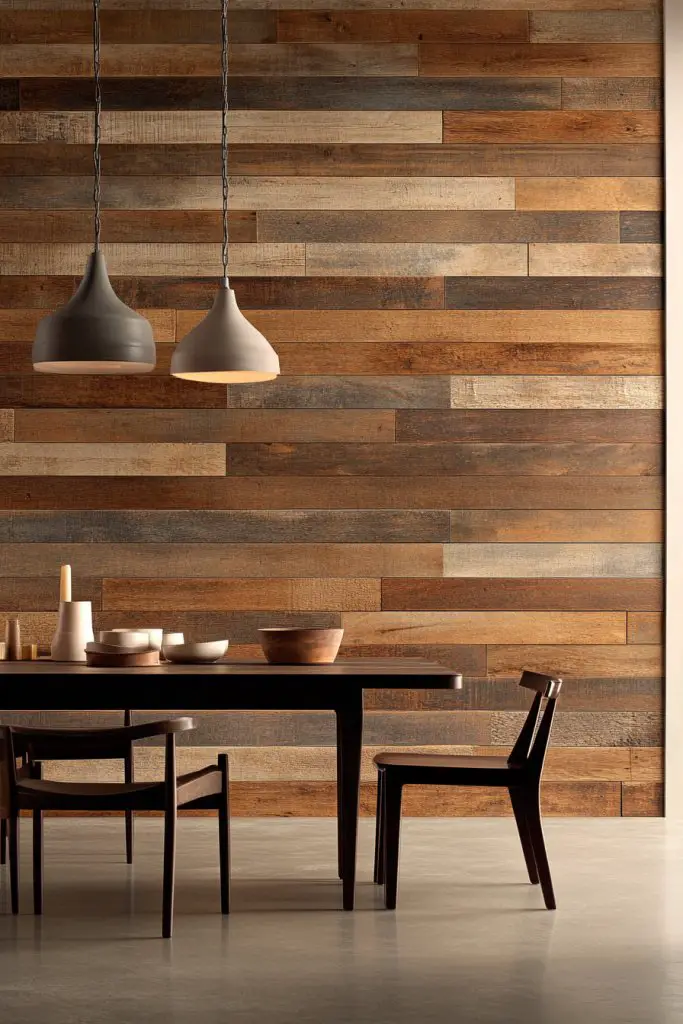
Textured wall paneling adds depth and tactile interest to a dining room, elevating the overall ambiance with understated sophistication. Materials like reclaimed wood, fabric-covered panels, or smooth plaster with subtle embossing can create a refined yet inviting backdrop.
Recommended Products to replicate this idea
| # | Preview | Product | |
|---|---|---|---|
| 1 |
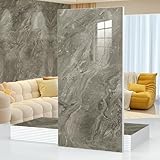
|
10pcs Marble Peel and Stick Waterproof Wall Panels,Heat-Resistant Backsplash Tile, 23.6"x11.8" PVC... | Check Latest Price |
| # | Preview | Product | |
|---|---|---|---|
| 1 |

|
White Caulk Tape Self Adhesive Waterproof, Bathroom Peel & Stick Caulking Strip Floor Tile Wallpaper... | Check Latest Price |
This approach introduces visual layers and a sense of craftsmanship, enriching the room’s serenity without overwhelming its calming aesthetic. Picture a feature wall clad in warm, weathered oak panels with a natural grain that invites touch.
Alternatively, imagine soft fabric panels in muted tones like blush or stone, gently absorbing sound and creating a cozy cocoon. These textures contrast beautifully with smooth surfaces—such as a sleek marble table or minimalist lighting fixtures—and subtly draw the eye, providing visual interest that remains peaceful and harmonious.
The tactile quality of the panels adds to the sensory experience, making the space feel thoughtfully curated. To implement this idea, choose a material that matches your style and budget—reclaimed wood for rustic charm, woven panels for warmth, or plaster with a subtle pattern for modern elegance.
Measure your wall carefully, and use adhesive or mounting hardware suitable for the chosen material. For a beginner-friendly project, opt for pre-made panels or peel-and-stick options. Finish with soft, ambient lighting to highlight the textures and enhance the serene atmosphere.
3. Minimalist Wall Shelves with Decorative Objects
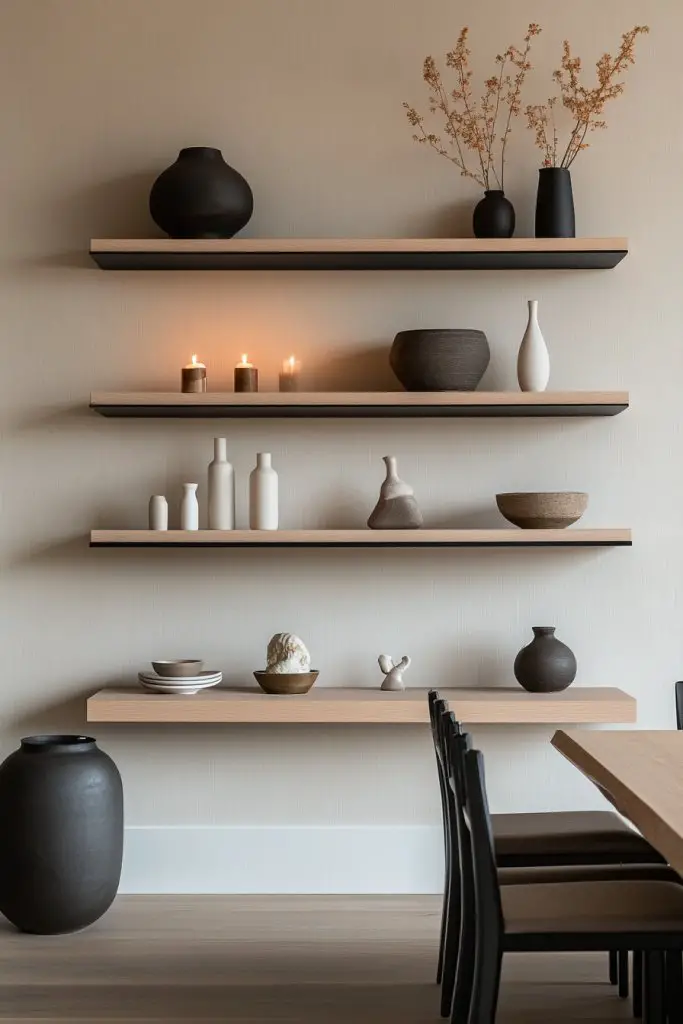
Sleek, minimalist wall shelves are perfect for displaying curated decorative objects that add personality while keeping the space uncluttered. Open shelving made from light wood or matte black metal can hold simple ceramics, glass vases, or small sculptures, creating a balanced focal point that radiates calmness and order.
Recommended Products to replicate this idea
| # | Preview | Product | |
|---|---|---|---|
| 1 |

|
upsimples Floating Shelves for Wall, Wall Shelves for Decor Storage Set of 6, Wall Mounted Wood... | Check Latest Price |
| # | Preview | Product | |
|---|---|---|---|
| 1 |

|
DAYBETTER LED Strip Lights 130ft Lights Strip for Bedroom, Desk, Indoor Room Bedroom Brithday Gifts... | Check Latest Price |
This approach allows for seasonal updates and personal touches, enriching the room’s serenity. Envision floating shelves in a soft matte black finish, lined with a few carefully chosen pieces such as matte white vases, delicate coral sculptures, or textured ceramic bowls in muted tones.
The shelves are spaced evenly, providing a visual rhythm that guides the eye gently across the wall. The overall effect is airy and organized, with each object contributing to a sense of calm and intentionality.
The open design encourages mindfulness and appreciation of each decorative element. To recreate this look, select slim, sturdy shelves—either wall-mounted wood planks or metal brackets with a sleek finish.
Keep decor minimal—choose 2-4 items per shelf in neutral or pastel shades—and avoid clutter. Install the shelves at eye level or slightly above, using a level and appropriate anchors for your wall type. Lightly illuminate the objects with soft LED strip lighting or wall sconces to enhance their textures and create a warm, inviting glow that complements the tranquil setting.
4. Subdued Wallpaper with Gentle Patterns
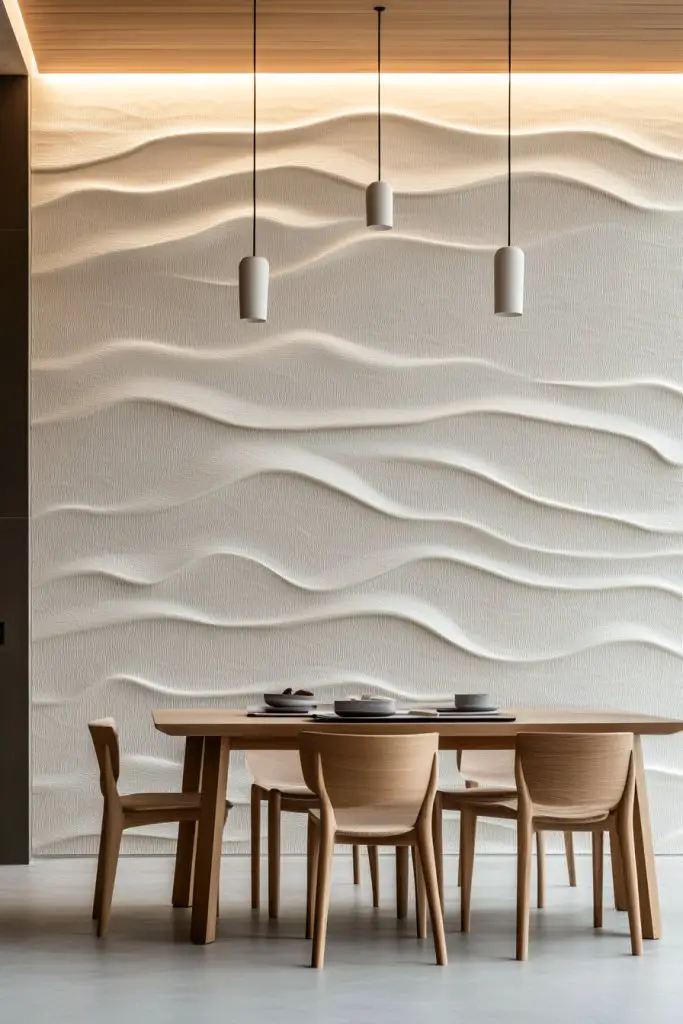
Choosing wallpaper with soft, flowing patterns or subtle textures introduces visual interest without disrupting the peaceful atmosphere of a dining room. Look for designs featuring gentle waves, delicate florals, or understated geometrics in muted hues like blush, sage, or oyster.
Recommended Products to replicate this idea
| # | Preview | Product | |
|---|---|---|---|
| 1 |

|
Laatse Vintage Wallpaper Peel and Stick Black Floral Wallpaper 17.5'' x 393'' Gold Leaf Contact... | Check Latest Price |
| # | Preview | Product | |
|---|---|---|---|
| 1 |

|
qt Zinsser 2104 Clear Shieldz Water-Based Acrylic Wallpaper Primer | Check Latest Price |
This creates a sophisticated backdrop that adds depth and personality while maintaining a calm, cohesive environment. Imagine a wall adorned with wallpaper showcasing faint, swirling patterns in shades of light gray and blush.
The texture feels almost tactile—like woven fabric or embossed paper—that softly catches the light, creating gentle shadows. The pattern adds a layer of visual softness, making the room feel more intimate and layered.
When paired with neutral furniture and soft lighting, this wallpaper enhances the room’s serene ambiance, inviting lingering conversations and relaxed dining. To achieve this look, select a wallpaper with a subtle pattern and a matte or eggshell finish to minimize glare.
Measure your wall carefully, and use a high-quality primer if needed to ensure smooth application. For ease, opt for peel-and-stick wallpaper or hire a professional for a seamless install. Complement the wallpaper with simple, neutral-colored furniture and light fixtures that cast a warm glow, ensuring the pattern remains the understated but elegant focal point.
5. Incorporating Mirror Accents to Reflect Light
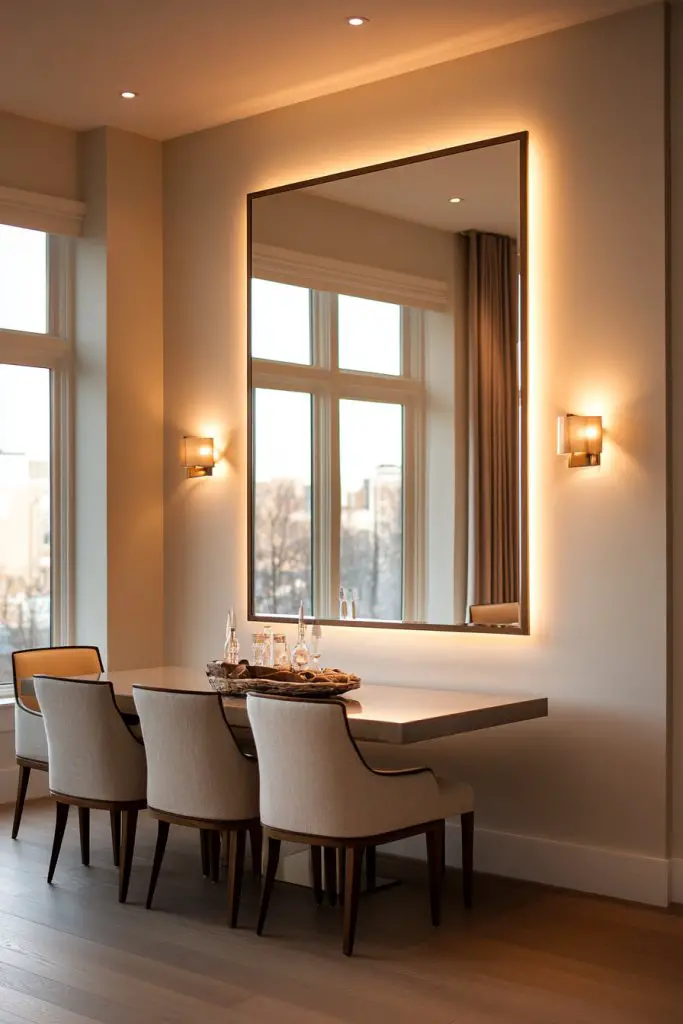
Mirrors are a simple yet powerful tool to amplify natural light and create a sense of spaciousness in the dining room. Strategically placing a large, frameless mirror or a series of smaller mirrors can reflect sunlight and ambient light, brightening the space and fostering a peaceful, airy atmosphere.
Recommended Products to replicate this idea
| # | Preview | Product | |
|---|---|---|---|
| 1 |

|
DUMOS Full Length Mirror 59"x17" Full Body Floor Mirror for Bedroom or Cloakroom, Can Stand Alone,... | Check Latest Price |
| # | Preview | Product | |
|---|---|---|---|
| 1 |

|
Blulu 20 Pack Mirror Holder Clips for 6 mm in (6/25) Glass Mirror Hanging Kit for Wall Mounting... | Check Latest Price |
Mirrors also add an element of elegance and help visually expand the room, making it feel more open and calming. Imagine a large, oval mirror with a slim, matte black frame hung above a sideboard or on a blank wall.
During the day, it captures and reflects the sunlight pouring in through a nearby window, casting a soft glow across the room. The mirror’s sleek surface bounces light around the space, reducing shadows and creating a tranquil, luminous environment.
At night, the reflection of warm, gentle lighting fixtures enhances the cozy, serene feel—making the room inviting and calm at any hour. To incorporate this idea, select a mirror that complements your room’s style—frameless for a minimalist look or with a subtle, understated frame.
Position it opposite or adjacent to windows for maximum light reflection. Mount securely using appropriate hardware, ensuring safety and stability.
For a budget-friendly option, consider large decorative mirrors from home stores or repurpose vintage frames. Use soft, warm lighting around the mirror to amplify its calming effect and create a peaceful ambiance in your dining space.
6. Frameless or Thin-Framed Art for a Clean Look
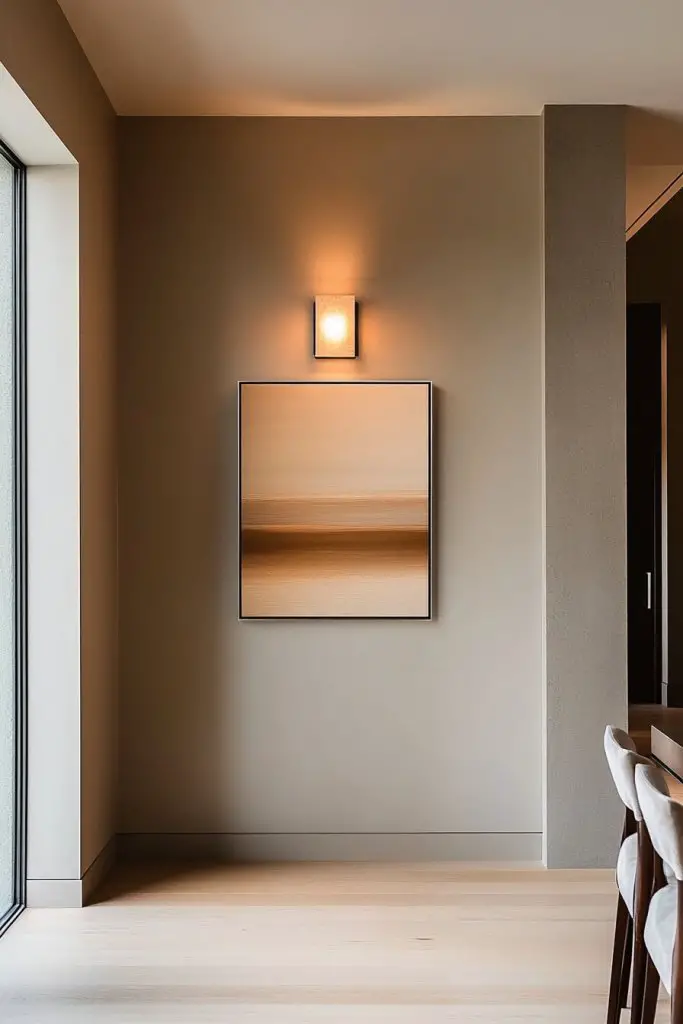
A sleek, clutter-free wall can instantly elevate the serenity of your dining space, and choosing frameless or thin-framed art is a perfect way to achieve this minimalist aesthetic. This approach creates a calming visual flow, allowing the artwork to blend seamlessly into the surroundings without overwhelming the room.
Recommended Products to replicate this idea
| # | Preview | Product | |
|---|---|---|---|
| 1 |

|
Empire Art Direct Frameless Free Floating Tempered Glass Panel Graphic Wall Art Ready to Hang, 24" x... | Check Latest Price |
| # | Preview | Product | |
|---|---|---|---|
| 1 |

|
Command Large Picture Hanging Strips, White, Holds up to 16 lbs, 14-Pairs, Easy to Open Packaging | Check Latest Price |
It’s an ideal choice for those who want a modern, airy feel that emphasizes simplicity and calm. Imagine a large, soft pastel-colored photograph or a subtle abstract print mounted directly onto the wall with a thin, nearly invisible frame or no frame at all.
The edges of the artwork seem to float, giving a light, unobtrusive presence. The colors are soothing—muted blues, gentle pinks, or soft neutrals—complementing the wall paint and other decor.
The overall effect is clean, spacious, and tranquil, inviting calmness at every glance. To recreate this look, select artwork in muted tones that resonate with your room’s palette.
Use a high-quality print on thick, matte paper or canvas, and mount it with a minimal or no frame—many art stores offer ready-to-hang frameless options. Hang the piece at eye level, ensuring proper spacing around it to keep the wall feeling open. Simple hardware like picture-hanging strips or discreet nails will keep the focus on the art itself, resulting in a serene, uncluttered wall that enhances your dining room’s peaceful ambiance.
7. Use of Soft, Diffused Lighting on the Walls

Creating a warm, inviting atmosphere in your dining room is all about the right lighting, and soft, diffused light plays a crucial role in establishing a tranquil environment. Instead of harsh overhead fixtures, gentle wall lighting—like sconces or concealed LED strips—casts a calming glow that soothes the senses and enhances the room’s serenity.
Recommended Products to replicate this idea
| # | Preview | Product | |
|---|---|---|---|
| 1 |

|
Design House Village Traditional 1-Light Indoor Dimmable Wall Sconce, Frosted Flute Glass, Twist... | Check Latest Price |
| # | Preview | Product | |
|---|---|---|---|
| 1 |

|
DAYBETTER LED Strip Lights 130ft Lights Strip for Bedroom, Desk, Indoor Room Bedroom Brithday Gifts... | Check Latest Price |
Visualize wall sconces with frosted glass shades emitting a warm, amber light that bathes the walls in a gentle hue. Alternatively, concealed LED strip lights installed behind crown molding or along the top edge of the wall can provide a seamless, glow that softly illuminates the space without creating glare.
As the light diffuses across textured walls or subtle wallpaper, it adds depth and warmth, making the room feel cozy and peaceful. The overall effect is a soft, inviting ambiance that encourages lingering conversations and relaxed dining.
To implement this, choose wall sconces with dimmable features to control the light intensity. For a simple DIY approach, install LED strip lights behind molding or along the ceiling line using adhesive-backed strips, which are easy to set up and customize.
Use warm white bulbs (around 2700K) for the most calming effect. Ensure the lighting fixtures are securely mounted and positioned to avoid harsh shadows. With a few thoughtful touches, you can transform your dining room into a softly lit sanctuary perfect for serene gatherings.
8. Creating a Focal Wall with Natural Textures
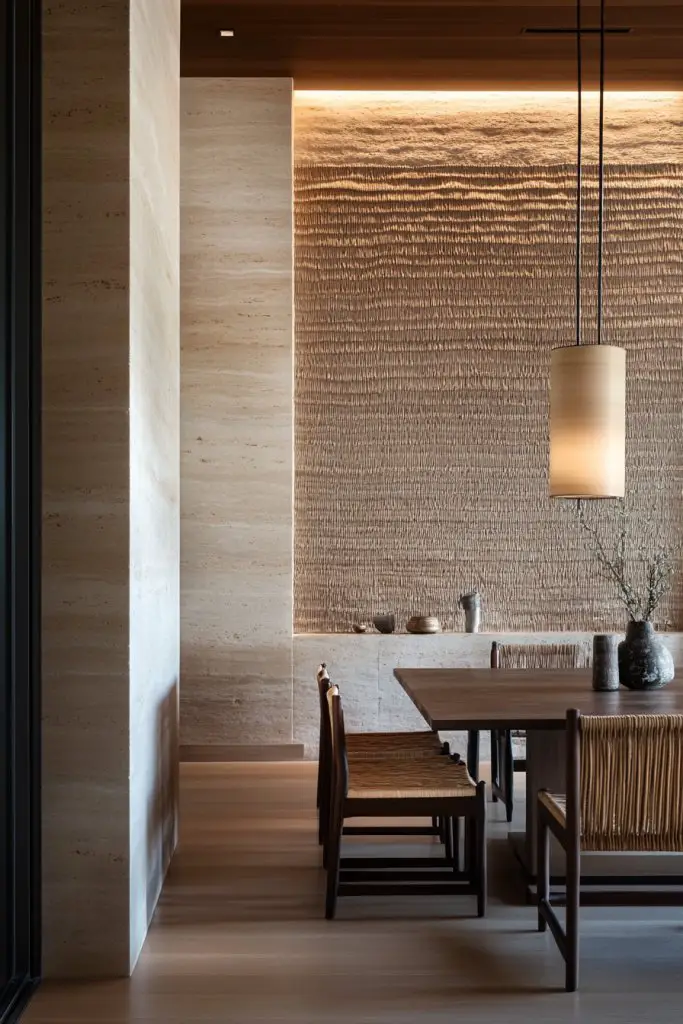
A focal wall that showcases natural textures instantly adds depth and peaceful energy to your dining room, serving as a subtle yet striking statement. This design element introduces tactile richness—think reclaimed wood, woven panels, or stone—that grounds the space and fosters a sense of calm, nature-inspired serenity.
Recommended Products to replicate this idea
| # | Preview | Product | |
|---|---|---|---|
| 1 |

|
Art3dwallpanels 33 Pack 3D Wall Panel Diamond for Interior Wall Décor, PVC Flower Textured Wall... | Check Latest Price |
| # | Preview | Product | |
|---|---|---|---|
| 1 |

|
CONCORD WALLCOVERINGS ™ Retro-Art 3D Faux Stone Wall Panels, Pack of 10, Grey Beige Brown Wild... | Check Latest Price |
Picture a wall covered in horizontally laid reclaimed wood planks with warm, earthy tones, or a textured woven fiber panel in neutral shades like beige or soft gray. You might also opt for a stone veneer that adds a rustic touch, or a wall with plaster or clay finishes that evoke organic patterns.
These textures invite touch and visual interest without cluttering the space, creating a balanced backdrop that encourages relaxation and mindfulness. The natural materials also bring a gentle aroma of wood or earth, enhancing the sensory experience.
To create this, start by selecting high-quality textured panels or materials that suit your style and budget. Reclaimed wood planks or woven wall hangings are beginner-friendly options—many can be DIY-installed with basic tools and adhesive.
Prepare your wall by cleaning and leveling it, then attach your chosen texture securely, following manufacturer instructions. Keep the surrounding decor simple to highlight the textured feature, and enjoy a serene, nature-inspired focal point that elevates your dining experience.
9. Incorporating Calm Color Blocks or Stripes
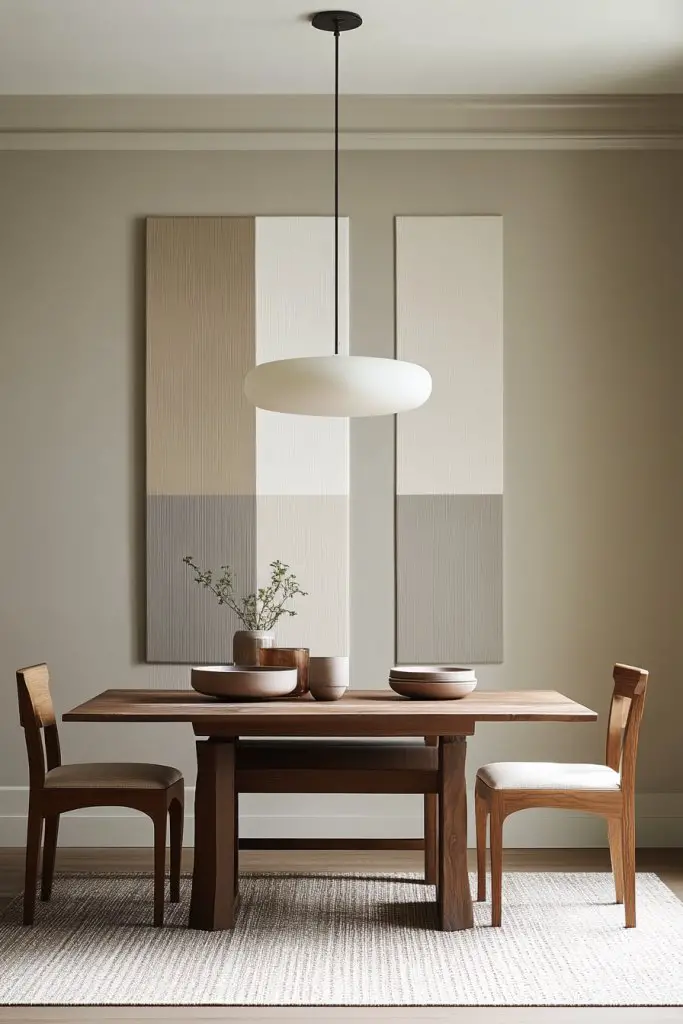
Introducing calm color blocks or stripes on your dining room walls can add subtle patterning that promotes tranquility while maintaining visual interest. Large, horizontal or vertical stripes in muted, soothing tones create a gentle rhythm that relaxes the mind and energizes the space simultaneously.
Imagine a wall painted with wide bands of soft blush pink and warm taupe, or subtle vertical stripes in shades of pale blue and creamy beige. These color blocks can be painted directly onto the wall with painter’s tape and high-quality wall paint, or achieved with removable wallpaper featuring gentle stripe patterns.
The use of muted, harmonious hues ensures the design remains understated and serene, avoiding the chaos that brighter or more contrasting patterns might introduce. This approach subtly guides the eye across the room, creating a balanced and peaceful environment.
To implement, select a palette of calming colors that complement your existing decor. Use painter’s tape to mark out your stripes or blocks precisely, and apply multiple coats of paint for clean lines and even coverage.
For a less permanent option, choose removable wallpaper in soft patterns. Keep the surrounding decor minimal, and allow the color blocks to serve as a gentle visual anchor that enhances the room’s tranquil atmosphere with understated elegance.
10. Installing Floating Wall Cabinets for Organized Storage
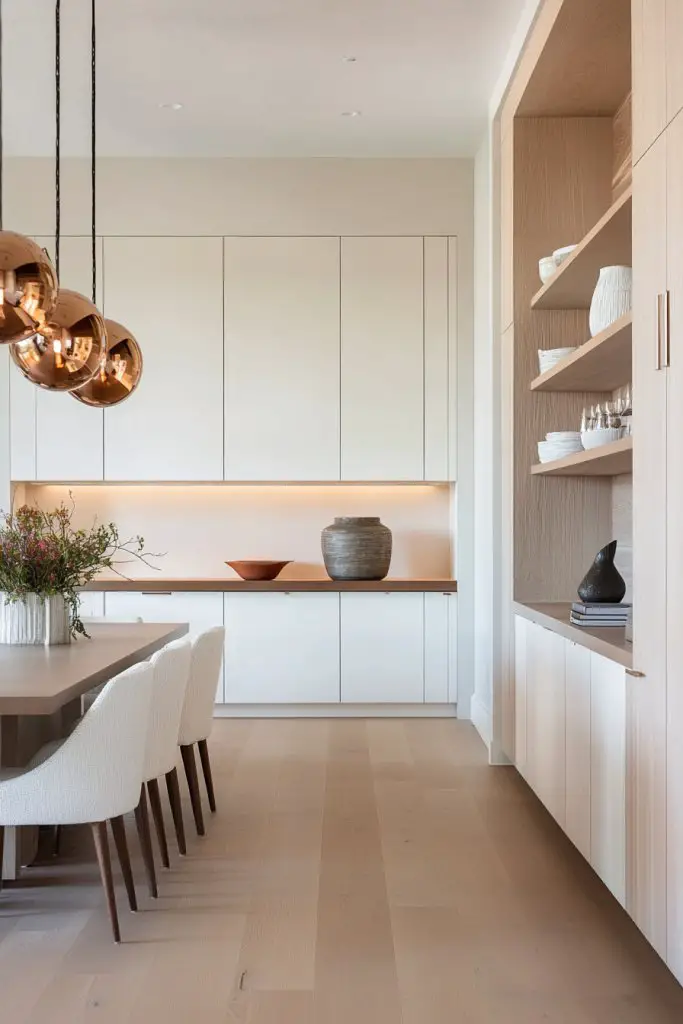
Floating wall cabinets are a practical yet stylish solution to keep your dining room tidy and serene. These sleek, unobtrusive storage units hover above the floor, providing space for dishes, glassware, or decorative objects, while preserving an open, airy feel that fosters calmness.
Recommended Products to replicate this idea
| # | Preview | Product | |
|---|---|---|---|
| 1 |

|
White Laundry Room Cabinets and Storage with 4 Doors and Utility Adjustable Shelf,Gabinetes Para... | Check Latest Price |
| # | Preview | Product | |
|---|---|---|---|
| 1 |

|
Metal Garage Shelving Unit, Heavy Duty 5-Tier Adjustable Storage shelves, Steel Shelving, 3000 lbs... | Check Latest Price |
Imagine streamlined, matte-finished cabinets in neutral tones—like soft gray, warm taupe, or crisp white—mounted just below eye level. Their clean lines and minimal hardware make them blend seamlessly into the wall, preventing visual clutter.
With neatly organized shelves or compartments inside, they offer easy access to essentials and reduce countertop mess, which is key to maintaining a peaceful environment. The open space underneath can serve as a display spot for a slender vase or a simple sculpture, adding to the room’s understated elegance.
To set up, measure your wall space carefully to select appropriate cabinet sizes. Choose floating cabinets with concealed mounting hardware for a seamless look, and use a level to ensure perfect alignment.
Install with basic tools—drill, screws, and anchors—and opt for units with adjustable shelves for flexibility. Keep the interior organized with baskets or labeled containers for efficiency. This simple upgrade not only enhances functionality but also contributes to a serene, clutter-free dining area.
11. Adding Soft Fabric Wall Coverings or Tapestry

Introducing soft fabric wall coverings or tapestries is a fantastic way to infuse warmth and texture into your dining room, creating an inviting and serene atmosphere. This approach transforms a plain wall into a cozy focal point, softening the overall aesthetic and adding a layer of tactile comfort.
Imagine a large, neutral-toned linen tapestry draped gracefully across the wall, its gentle folds catching the light and inviting touch. The fabric’s subtle weave adds a delicate texture that plays with light and shadow, while its muted color palette—think soft cream, taupe, or pale gray—keeps the space calm and cohesive.
The tactile quality of the fabric invites lingering, and the subtle scent of natural fibers can enhance the sensory experience, making the room feel peaceful and warm. This soft layer visually balances any hard surfaces and complements other textures, such as wood or ceramic accents.
To incorporate this idea, start by choosing a lightweight, neutral fabric like linen, cotton, or wool blend that matches your color scheme. Measure your wall space and select a tapestry or fabric panel that fits comfortably, leaving some margin around the edges for a relaxed look.
Hang it using a simple curtain rod, tension wire, or adhesive hooks to avoid damaging the wall. If you prefer a more tailored look, opt for a custom frame or a fabric-adhesive solution. Combining this with other soft furnishings like a plush table runner or cushioned chairs will enhance the cozy, tranquil vibe effortlessly.
12. Layering Metallic Accents for Subtle Shine
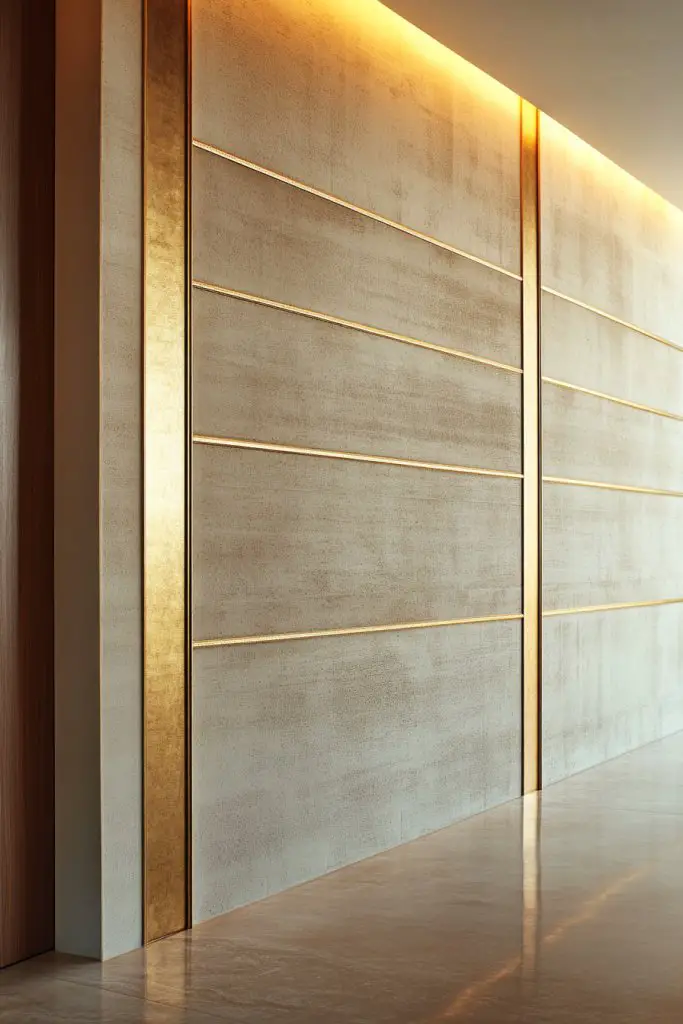
Adding layered metallic accents is a subtle yet effective way to introduce understated elegance and a hint of shimmer that elevates the entire dining room ambiance. These accents create visual interest without overpowering the serene environment, adding a sophisticated touch that feels both modern and timeless.
Picture soft, brushed gold or matte silver decorative trims along a wall’s architectural features, or sleek metallic wall-mounted candle holders that catch the light with gentle gleam. Incorporate metallic elements through small sculptures, decorative bowls, or even textured trims on wall panels.
These accents reflect ambient light softly, creating a calming glow that enhances the room’s peaceful mood. The muted finishes—brushed, matte, or satin—ensure the metallic details don’t dominate but instead add a refined layer of subtle shine, complementing other textures like soft fabrics or matte paints.
To achieve this layered look, select metallic accessories that align with your color palette—think brushed nickel, matte gold, or antique bronze. Start with simple elements like a metallic tray or candle holders placed on a sideboard, or introduce metallic trims on cushions or lampshades.
For wall accents, consider installing thin, metallic decorative strips or fixtures in low-profile designs. Keep the overall metallic theme consistent and understated to maintain serenity. These small, thoughtful touches can be integrated with minimal effort, creating a refined, cohesive aesthetic that feels both polished and calming.
13. Creating a Serene Gallery Wall with Cohesive Frames
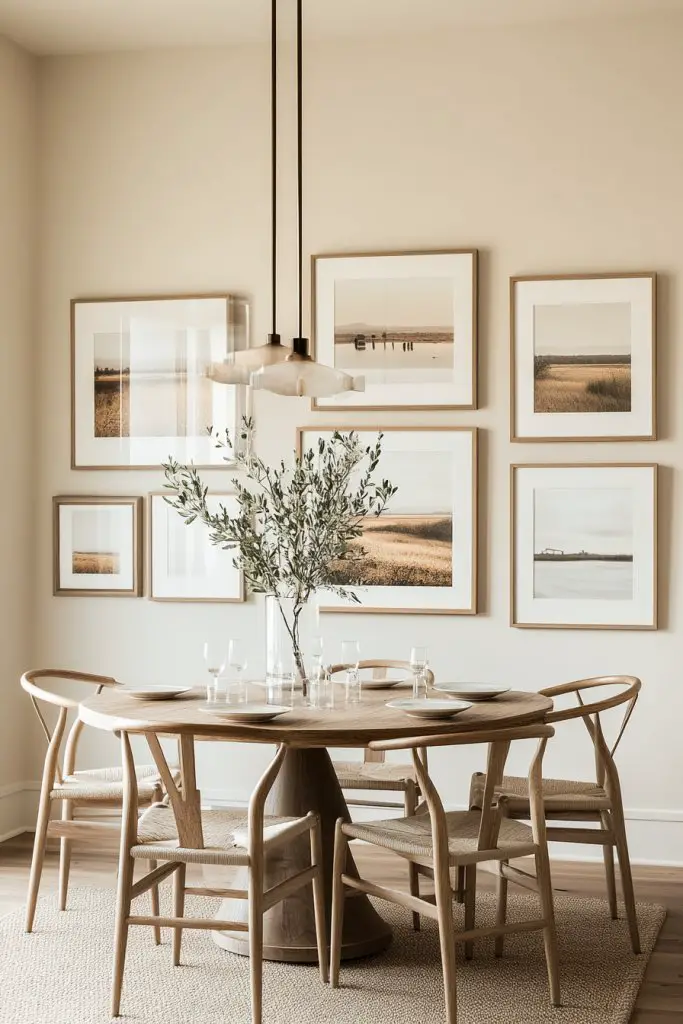
A serene gallery wall offers a personalized and calming focal point in your dining room, blending visual interest with a cohesive, harmonious look that enhances the tranquil atmosphere. Carefully curated, this display balances variety and uniformity to keep the space feeling peaceful and inviting.
Recommended Products to replicate this idea
| # | Preview | Product | |
|---|---|---|---|
| 1 |

|
LUCKYLIFE Picture Frames Collage Wall Decor 10-Pack, Gallery Wall Frame Set with 8x10 5x7 4x6 Frames... | Check Latest Price |
| # | Preview | Product | |
|---|---|---|---|
| 1 |

|
dazongweihan 18 PCS Colorful Eclectic Wall Art Decor, Maximalist Wall Prints for Bedroom, Funky... | Check Latest Price |
Visualize a collection of monochromatic or pastel-colored framed prints arranged in a balanced grid or organic layout along a single wall. The frames are slim, matte-finished, and in shades like soft white, light gray, or muted gold, ensuring they don’t distract from the overall serenity.
The artwork itself features gentle abstract designs, subtle patterns, or calm landscapes, all chosen to evoke relaxation. The arrangement is spaced evenly, with ample margin to prevent clutter, and the overall composition guides the eye smoothly across the wall.
This creates a soothing visual rhythm that invites viewers to pause and appreciate the quiet beauty. To create this gallery wall, start by selecting 3-6 images that evoke calm, ensuring they share a cohesive color palette or theme.
Use matching or similarly styled frames for uniformity, or mix textures for added interest if they stay within a soft, neutral range. Arrange the frames on the floor first to perfect the layout before hanging, using painter’s tape to mark positions.
Hang the frames at eye level or slightly above for optimal viewing. This straightforward yet impactful project personalizes your space while maintaining a peaceful, harmonious aesthetic that complements the room’s serene atmosphere.
14. Installing Wainscoting or Chair Rail for Architectural Interest
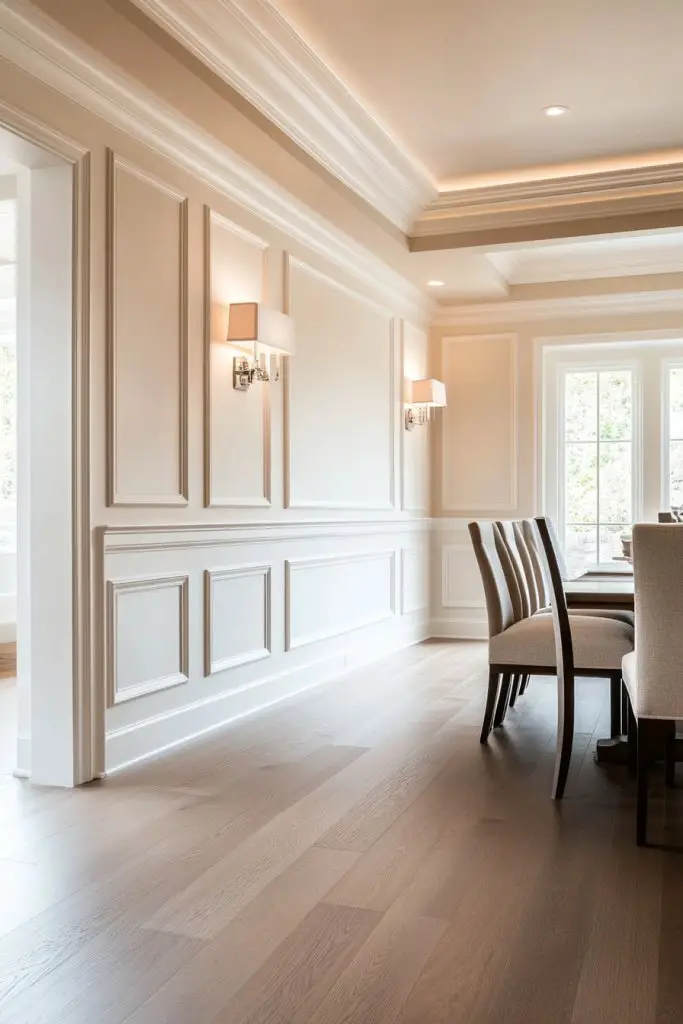
Wainscoting and chair rails introduce classic architectural detail that adds both texture and structure to your dining room walls, fostering a sense of order and calm. These elements elevate the space subtly, creating a polished, yet tranquil environment that feels timeless.
Recommended Products to replicate this idea
| # | Preview | Product | |
|---|---|---|---|
| 1 |

|
Art3d Premade Board and Batten Paintable Wainscoting Kit, MDF Accent Wall Panel for Kitchen Bedroom... | Check Latest Price |
| # | Preview | Product | |
|---|---|---|---|
| 1 |

|
moonoom 20 Ft x 1.6''Wall Decoration Molding Trim,Self-Adhesive 3D Chair Rail Panel Molding,... | Check Latest Price |
Visualize a smooth, painted wainscoting paneling in soft shades like pale gray or warm beige, running horizontally along the lower third of the wall. It’s topped with a simple, elegant chair rail that visually separates the textured panel from the upper wall, which could be painted in a complementary, muted tone.
The textured panel adds depth and tactile interest, while the chair rail provides a clean, finished look. The overall effect is a balanced composition that anchors the room, enhances its architectural character, and promotes a sense of calm and order.
For installation, select pre-made wainscoting panels or create your own with MDF or beadboard, which are affordable and easy to work with. Measure your wall space carefully and cut panels to fit, then attach with wall adhesive and finishing nails.
Paint or stain the panels and trim in your chosen muted tone, ensuring a smooth, even finish. Finish with caulk and touch-up paint for a seamless appearance. This project is manageable for DIY enthusiasts and instantly adds an elegant, calming architectural detail that elevates your dining room’s overall serenity.
15. Using Soft Fabric Wall Hangings for Texture and Warmth
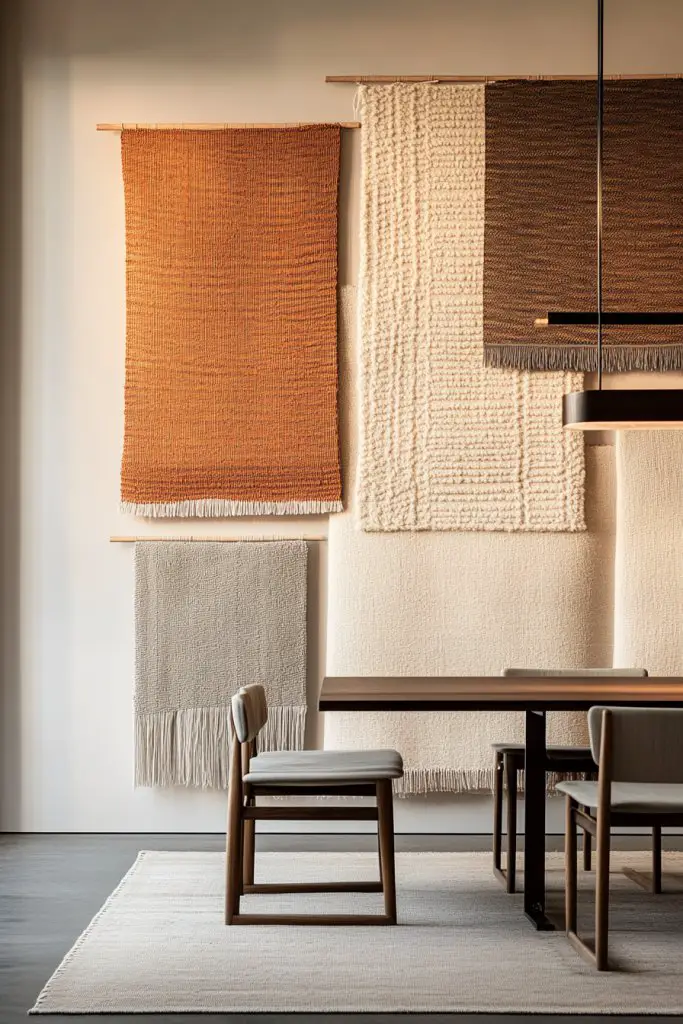
Soft fabric wall hangings bring a cozy, tactile layer to your dining room that softens the space and enhances its calming vibe. These textiles add visual warmth and gentle movement, making the environment feel more inviting and peaceful.
Recommended Products to replicate this idea
| # | Preview | Product | |
|---|---|---|---|
| 1 |

|
Flber Macrame Wall Hanging Boho Wall Decor Yarn Wall Art Tapestry Bedroom Living Room Nursery... | Check Latest Price |
| # | Preview | Product | |
|---|---|---|---|
| 1 |

|
60Pcs Wooden Dowel Rods 1/4 x 11.8 Inch Bamboo Sticks Natural Wood Dowels Unfinished Hardwood Sticks... | Check Latest Price |
Picture a large, neutral-colored wall hanging made from textured linen or wool, with subtle fringes or embroidery that catch the eye without overwhelming the senses. The fabric’s natural fibers lend a sense of warmth, while the understated design complements the room’s overall muted color palette.
The soft, flowing texture absorbs sound slightly, reducing echoes and creating a quieter, more serene atmosphere. This textile acts as both a visual anchor and a sensory comfort, making the room feel more intimate and restful.
To incorporate this idea, choose a fabric wall hanging in a calming hue—think soft beige, blush, or light gray—that matches your decor. Hang it using a simple wooden dowel or a discreet rod with rings, ensuring it’s centered and at a comfortable eye level.
For added ease, opt for pre-made wall hangings or craft your own with a basic sewing kit and fabric in neutral tones. These textiles can be swapped out seasonally or when you want a fresh look, making them an easy and versatile way to add warmth and texture while maintaining a serene, harmonious dining space.
16. Incorporating Sculptural Wall Decor for Artistic Calm
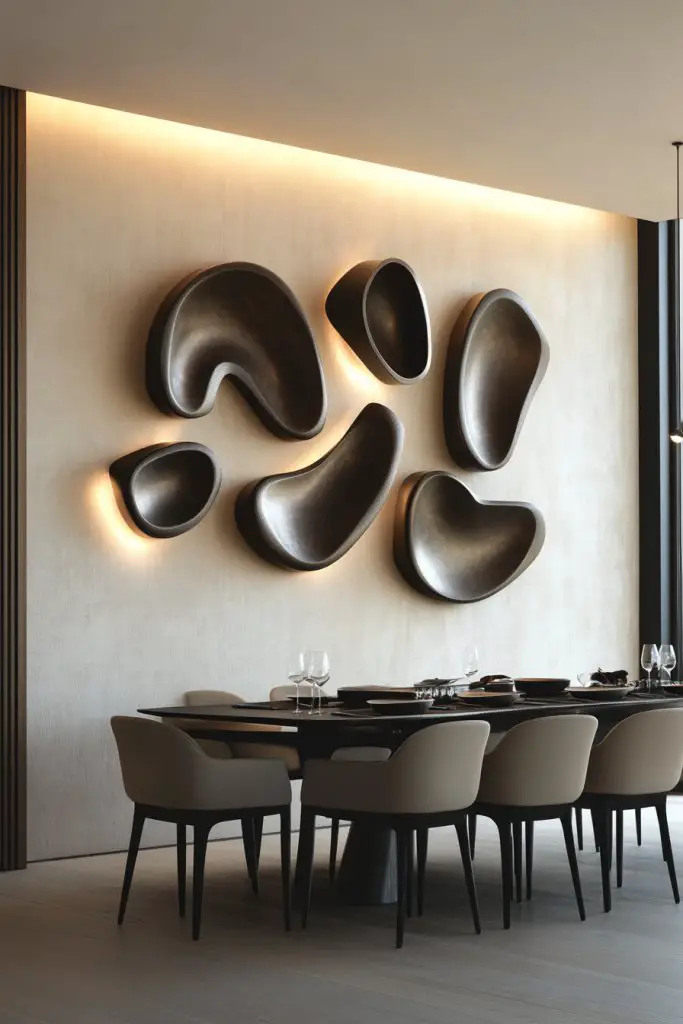
Adding sculptural wall decor introduces a subtle yet striking artistic element that enhances the serenity of your dining space. These pieces serve as focal points, drawing the eye without overwhelming the room’s peaceful vibe, offering a quiet sophistication.
Recommended Products to replicate this idea
| # | Preview | Product | |
|---|---|---|---|
| 1 |

|
Glamativity 4 Pack Black Abstract Metal Wall Art, Minimalist Décor Single Line Art Wall Décor, 3D... | Check Latest Price |
| # | Preview | Product | |
|---|---|---|---|
| 1 |

|
LIUCOGXI 5 Pcs Ceramic Flower Wall Decor Handcrafted 3D Hanging Porcelain Flowers Wall Art Ceramic... | Check Latest Price |
When chosen thoughtfully, sculptural accents can transform an ordinary wall into a captivating yet calming feature. Imagine a smooth, matte ceramic sculpture or a delicate abstract metal piece mounted on a neutral-toned wall.
The textures vary from tactile stone-like surfaces to sleek, polished metals, creating visual interest through contrast. These sculptures might be minimalist forms, such as a gently curved ceramic wave or a slender, elongated metal figure.
The overall palette remains muted—think soft taupe, brushed gold, or matte black—ensuring they complement the room’s serene atmosphere. The interplay of shadows cast by gentle lighting adds depth and a sense of calm.
These decor elements quietly invite reflection, adding an artistic touch without disrupting the tranquility. To incorporate sculptural wall decor, start by selecting pieces that resonate with your style—simple geometric shapes, organic forms, or abstract art.
Mount them at eye level or slightly above to create a balanced focal point. Use a sturdy wall hook or a floating shelf for stability, and ensure the sculptures are secured properly.
Keep the surrounding area uncluttered to let the sculptures stand out. For a quick update, combine one statement piece with smaller complementary items, such as a textured ceramic bowl or a sleek metal wall hook, to subtly enhance your space’s calm, artistic ambiance.
17. Applying Gradient or Ombre Wall Techniques for Subtle Depth
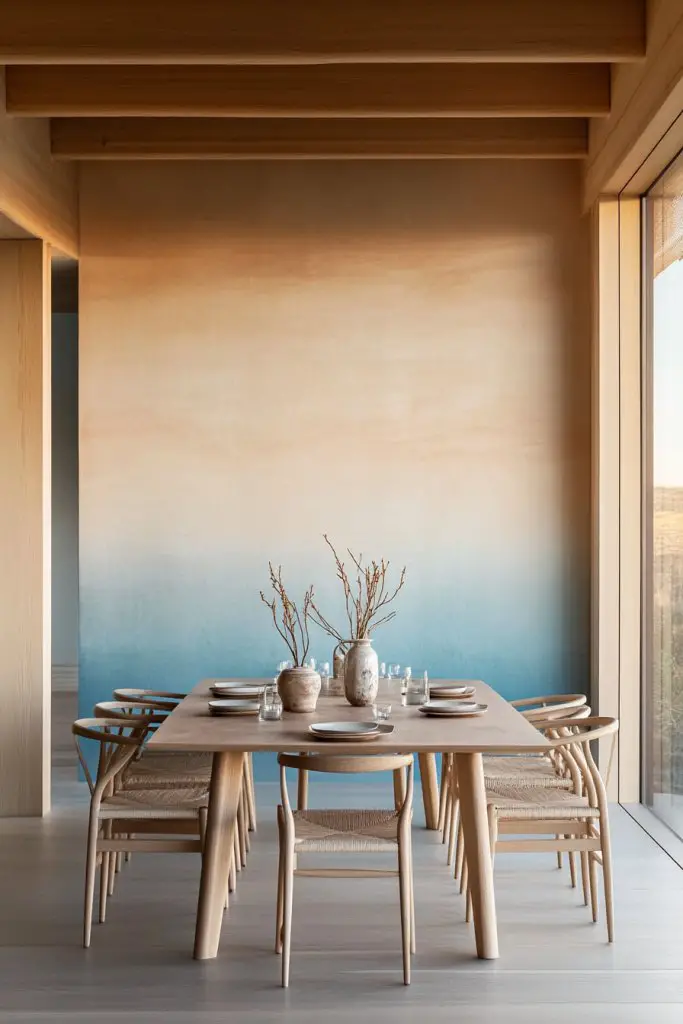
Gradient or ombre wall techniques create a soothing visual transition of color that adds depth and a calming aura to your dining room. This artistic approach softens stark walls with a gentle blend of shades, transforming your space into a peaceful retreat that feels both modern and inviting.
The subtle variation of hues offers a dynamic yet understated backdrop perfect for serene dining environments. Picture a wall where the color gently transitions from a warm, creamy beige at the top to a soft, muted taupe at the bottom.
The blend is seamless, with no harsh lines—just a smooth, flowing shift that invites the eye to wander. The finish can be matte or satin, depending on the mood you prefer, and textured paint or sponge techniques can add a tactile layer to the gradient.
The overall effect is a peaceful canvas that enhances natural light, making the space feel more expansive and tranquil. When paired with neutral furnishings and soft lighting, this wall treatment fosters a calming, harmonious atmosphere.
To achieve this look, start by choosing two or three harmonious shades within the same color family. Prepare your paint by mixing the shades into a gradient palette, or use a sponge or soft brush to blend the colors directly on the wall.
Use painter’s tape to create clean edges if needed, or opt for a freehand approach for a more organic flow. Apply the paint gradually, blending the colors as you go, and finish with a clear coat of matte or satin sealer for durability. For a beginner-friendly method, consider using a faux gradient wallpaper or a specialized ombre paint kit, which simplifies the process and ensures a seamless, elegant finish.
Conclusion
With a diverse array of wall design ideas—from soothing neutrals and textured panels to gentle wallpaper, mirrors, and calming artwork—there are endless ways to create a serene dining room space that reflects your personal style. Experimenting with these concepts can transform your dining area into a peaceful retreat where beauty and tranquility harmonize effortlessly.
Don’t hesitate to try different textures, colors, and accents to craft an environment that truly soothes your senses. Start designing today and turn your dining room into a haven of calm and elegance.
